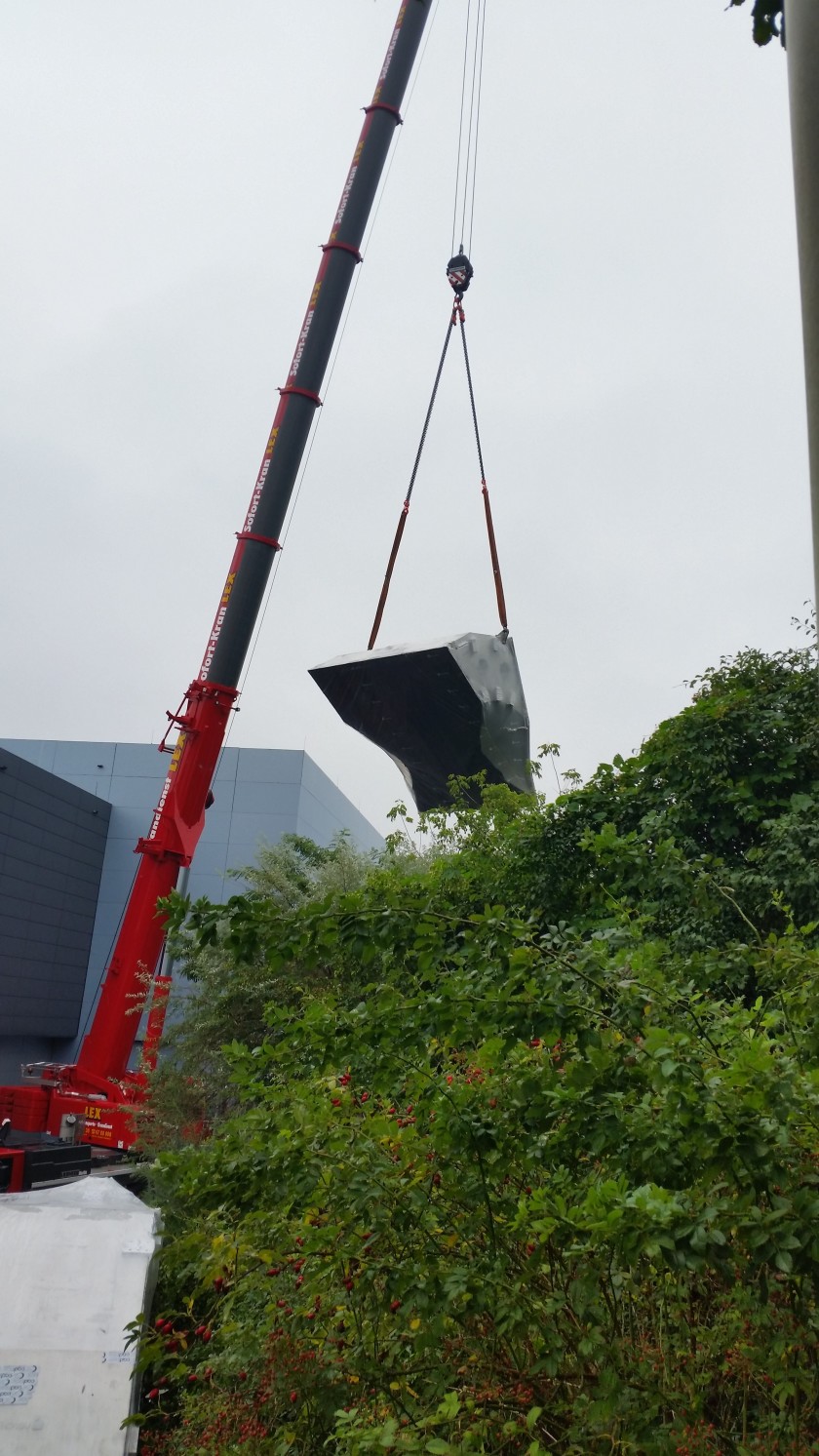NEAT: The chamber from Spain - HZB future log's latest addition

At first, the various parts are carefully unloaded so that they can be lifted quickly into the building through the roof of the NEAT building's newest addition.
© Stefanie Kodalle
Since the HZB future log (#HZBzlog) went live in March of this year, there have been a total of 15 episodes on building and developing our future projects. The focus has been on three projects in particular: high field magnet (for a total of seven episodes), EMIL (five episodes), and BESSY-VSR (three episodes). Next, the NEAT project team is taking the #HZBzlog stage.
The first episode entitled "The chamber from Spain" lets those watching and reading trace the detector chamber's course. Constructed in Spain, the chamber is slated to arrive at the HZB within the next couple of days. Witnessing the chamber's spectacular lift into the neutron conductor hall through the building's ceiling will be one of the episode's highlights.
The first NEAT episode will pick up where the current high field magnet (HFM) episode "Stairway to Heaven" left off. The episode's title, which is loosely based on the Led Zeppelin rock ballad of the same name, is no accident. Because if the electricity tests turn out successful, the HFM team will indeed feel fairly heavenly, meaning not much will stand in the way of successfully starting operation of the magnet.
As always, we will also be letting you know about stuff to know about current topics that are part of the team's research activities. In the case of "Stairway to Heaven," it might look something like this: Hartmut Ehmler talks about how the team gradually increases the electric current's strength that is being sent through the magnet. He tells of unexpected rises in temperature and of the team's response to them. Right after, Jonas Böhm explains facts to know about helium, the coolant of extremes. And Antonia Rötger will be speaking on the topic of quenching.
The NEAT episode will also provide interesting tidbits and special features on the topic of the construction work including a piece on the "travel window." Not sure what we're talking about? Just drop by and stay tuned to #hzbzlog (www.hzbzlog.com). You're of course invited to comment or ask questions. For HZB staff, that bit will be a piece of cake. All they have to do is click the "comment" button and register using their HZB email address.
IH
https://www.helmholtz-berlin.de/pubbin/news_seite?nid=14055;sprache=en
- Copy link
-
Ultrafast dissociation of molecules studied at BESSY II
For the first time, an international team has tracked at BESSY II how heavy molecules – in this case bromochloromethane – disintegrate into smaller fragments when they absorb X-ray light. Using a newly developed analytical method, they were able to visualise the ultrafast dynamics of this process. In this process, the X-ray photons trigger a "molecular catapult effect": light atomic groups are ejected first, similar to projectiles fired from a catapult, while the heavier atoms - bromine and chlorine - separate more slowly.
-
Battery research with the HZB X-ray microscope
New cathode materials are being developed to further increase the capacity of lithium batteries. Multilayer lithium-rich transition metal oxides (LRTMOs) offer particularly high energy density. However, their capacity decreases with each charging cycle due to structural and chemical changes. Using X-ray methods at BESSY II, teams from several Chinese research institutions have now investigated these changes for the first time with highest precision: at the unique X-ray microscope, they were able to observe morphological and structural developments on the nanometre scale and also clarify chemical changes.
-
BESSY II: New procedure for better thermoplastics
Bio-based thermoplastics are produced from renewable organic materials and can be recycled after use. Their resilience can be improved by blending bio-based thermoplastics with other thermoplastics. However, the interface between the materials in these blends sometimes requires enhancement to achieve optimal properties. A team from the Eindhoven University of Technology in the Netherlands has now investigated at BESSY II how a new process enables thermoplastic blends with a high interfacial strength to be made from two base materials: Images taken at the new nano station of the IRIS beamline showed that nanocrystalline layers form during the process, which increase material performance.
